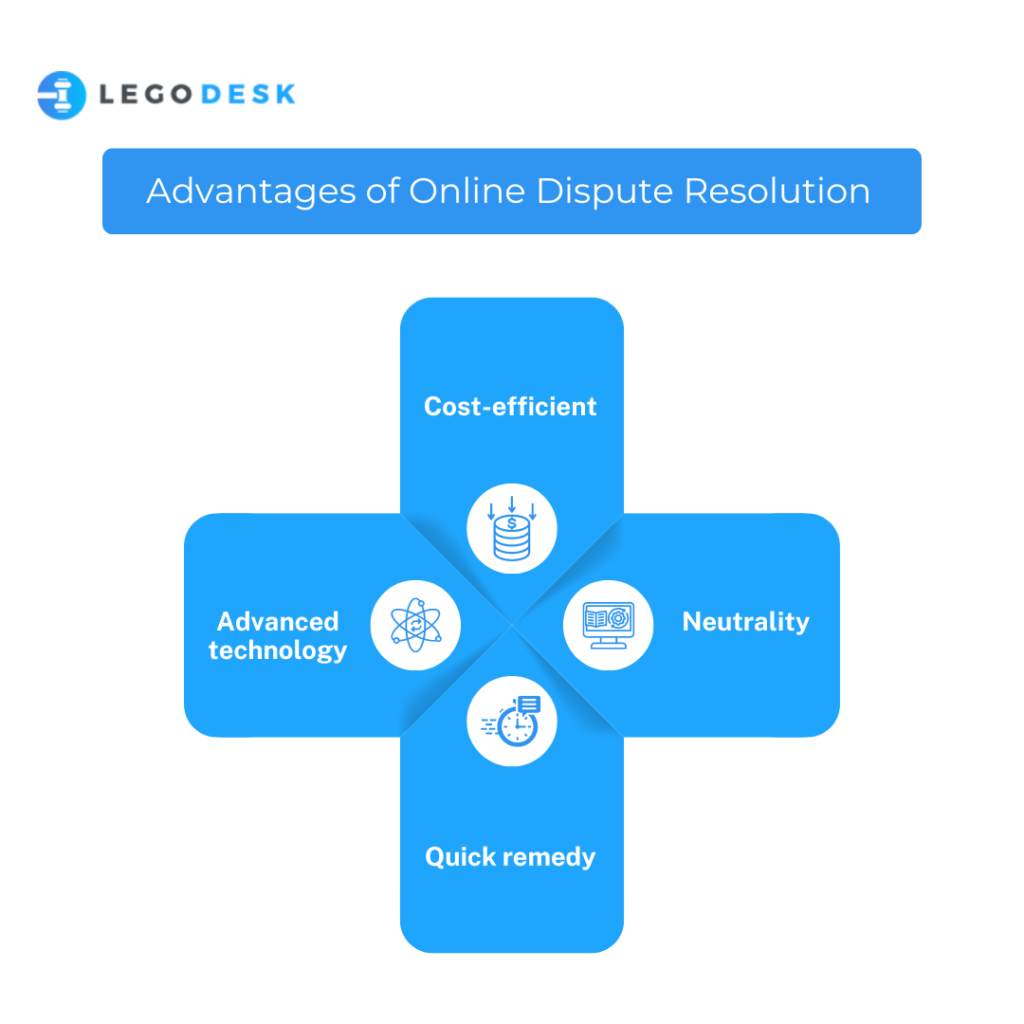Future of Online Dispute Resolution
What is ODR?
From the last two decades, we have primarily seen two reforms in the legal system. The first reform focuses on improving the judiciary’s efficiency at resolving disputes. The second reform aims at reducing the entry of disputes in the courts. The United Nations Commission on International Trade Law Online Dispute Resolution Working Group defines online dispute resolution as “a mechanism for resolving disputes facilitated through the use of electronic communications and other information and communication technology”.[1]
Online Dispute Resolution (ODR) is simply interactions taking place online using technology to resolve disputes. In practice, it offers more advantages than the traditional offline alternative dispute resolutions mechanisms. Parties do not have to be present together in person and resolution can take place through asynchronous communication.
There is no need for parties to communicate simultaneously. Thus, technology acts as a helping hand in resolving disputes. Recently the applications for online dispute resolution have widened their scope. Initially, it only focused on banking, employment, and real estate. Presently its scope has increased.
Advantages of Online Dispute Resolution

- Cost-efficient
It is a more cost-effective method of dispute resolution than other methods. The basic requirement for ODR is good internet connectivity and lawyers booked for short time slots. The entire process is online. Parties need not travel to court. Thus, it reduces transportation costs.
- Neutrality
The process is online and tends to be more unbiased vis-a-vis litigation. Thus, the result is neutral. By establishing parameters of resolution, it helps to facilitate transparent, fair proceedings.
- Quick remedy
The remedy given in ODR is quicker and settlement of the dispute is faster than the traditional method of filing a case in the court. Small and medium-level disputes between parties can be easily resolved through ODR which would otherwise remain pending in a court of law.
- Advanced technology
Current Situation in India
The Supreme Court of India has played an important role in setting the foundation for ushering ODR in our country. In the case of State of Maharashtra v. Praful Desai, the Supreme Court upheld the validity of video-conferencing as a mode of taking evidence.
The Supreme Court has held that if disputes can be resolved virtually, physical appearance in courts is not necessary.[2]
India has also adopted the UNCITRAL Model Law on Electronic Commerce in 1996 and the Model Law on Electronic Signatures in 2001.
Thus, technology integration in dispute resolution and reliance on ADR mechanisms indicate that India is taking steps to transition logically to ODR. As difficult as it may be at present to imagine, the future of dispute resolution lies in technology, including artificial intelligence. In this regard, ODR can be a useful tool by advancing techniques for evaluating legal relationships neutrally to find early solutions. The Indian legal system already possesses the key elements for implementing technology in dispute resolution processes, such as institutional willingness, expertise, and to some extent, technology capacity. A new strategy is required to widen the reach of ODR and its benefits to the public at large.
Our thoughts
The Indian legal system has been concerned with dispute containment and dispute resolution. However, the time has come for the focus to shift from dispute resolution to ODR. It will be ideal for India to invest in ODR through the adoption of more advanced technology. ODR can pave a way for India’s futuristic justice system.
To conclude we need to create more awareness about ODR. It has many advantages such as quicker remedy, cost-efficient, etc. It has also helped us in resolving cross-border disputes.
[1] United Nations Commission on International Trade Law, ‘UNCITRAL Technical Notes on Online Dispute Resolution (2017) vii <uncitral.org/pdf/english/texts/odr/V1700382_English_Technical_Notes_on_ODR.pdf> accessed 31 August 2021.
[2] Grid Corporation of Orissa Ltd. v AES Corporation, (2003) 1 CALLT 50 SC.
